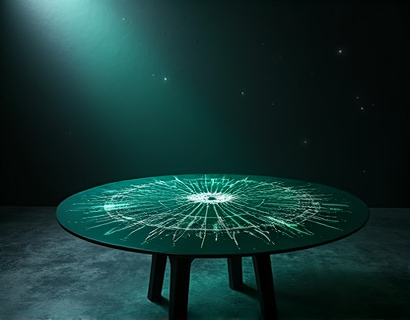Uncovering the Legacy of the Indus Valley Civilization: A Journey Through Art and Merchandise
Introduction to the Indus Valley Civilization
The Indus Valley Civilization, one of the world's earliest urban cultures, flourished around 3300 to 1300 BCE in the northwestern regions of South Asia. Spanning parts of present-day Pakistan and northwestern India, this civilization is renowned for its sophisticated urban planning, advanced water management systems, and intricate craftsmanship. Despite being one of the most significant ancient cultures, the Indus Valley Civilization remains shrouded in mystery, with much of its script and daily life still未解读. However, through archaeological discoveries and scholarly research, we can piece together a vivid picture of this ancient society and its enduring influence on modern culture.
The Urban Marvels of the Indus Valley
One of the most striking aspects of the Indus Valley Civilization is its urban planning. Cities like Harappa and Mohenjo-Daro, though not as large as some contemporary Mesopotamian cities, were remarkably well-organized. The layout of these cities featured grid patterns with straight streets and well-planned drainage systems. Houses were built with baked bricks, and many had multi-story structures, indicating a high level of architectural skill. The presence of public baths and sophisticated sewage systems highlights the civilization's advanced understanding of hygiene and urban living.
Architectural Innovations
The buildings in Indus Valley cities were constructed using standardized bricks, ensuring uniformity and durability. The Great Bath in Mohenjo-Daro, a large public structure, is a testament to the civilization's engineering prowess. This bath, with its intricate drainage system, suggests that water rituals played a significant role in the social and religious life of the people. The use of standardized weights and measures found across the civilization indicates a high degree of economic organization and trade.
Art and Craftsmanship
The Indus Valley Civilization was not only known for its urban achievements but also for its artistic and craft traditions. Artifacts such as seals, jewelry, and pottery showcase a high level of craftsmanship and artistic skill. Seals, often made of steatite, feature intricate carvings of animals and human figures, possibly used for trade or religious purposes. The famous "Priest-King" statue, a bronze figure with a headdress and beard, exemplifies the artistic sophistication of the period.
Jewelry and Personal Adornment
Jewelry made from gold, silver, and semi-precious stones like carnelian and lapis lazuli was prevalent among the elite. Beads, bangles, and pendants were common accessories, indicating a culture that valued personal adornment. The craftsmanship of these items reflects a deep understanding of materials and design, skills that continue to inspire modern artisans.
Trade and Economy
The Indus Valley Civilization had extensive trade networks that extended beyond its borders. Evidence of trade with Mesopotamia, the Persian Gulf, and even Central Asia has been found through the discovery of Indus seals in these regions and vice versa. The civilization's economy was likely based on agriculture, with crops like wheat, barley, and cotton being major products. The presence of harbors and dockyards suggests a robust maritime trade, facilitating the exchange of goods and ideas.
Agricultural Practices
Agriculture was the backbone of the Indus Valley Economy. The fertile Indus River Valley provided ideal conditions for farming, and the civilization developed advanced irrigation techniques to manage the seasonal floods. The cultivation of crops such as wheat, barley, and cotton not only sustained the population but also supported the production of textiles and other goods. The use of plows and other agricultural tools indicates a high level of technological advancement for the time.
Religion and Social Structure
While the religious beliefs of the Indus Valley Civilization are not fully understood, archaeological findings provide clues about their spiritual practices. The presence of numerous small altars and figurines, possibly representing deities, suggests a polytheistic religion. The Great Bath may have been a site for religious rituals, indicating the importance of water in their faith. The social structure appears to have been relatively egalitarian, with no evidence of large palaces or temples that would indicate a ruling elite.
Mystery of the Script
One of the most intriguing aspects of the Indus Valley Civilization is its script, which remains undeciphered. Over 400 distinct signs have been identified, but despite extensive research, the language and its meaning remain a mystery. This has left many questions unanswered about the daily life, governance, and cultural practices of the people. However, the script's presence on seals and pottery provides a window into the civilization's administrative and possibly religious systems.
Enduring Influence on Modern Culture
The legacy of the Indus Valley Civilization continues to inspire and influence modern culture, particularly in the realms of art and merchandise. The intricate designs and craftsmanship of ancient artifacts have found new life in contemporary products, from jewelry to home decor. These items not only serve as decorative pieces but also as educational tools that bring the past to life for history enthusiasts and cultural scholars.
Artistic Inspiration
Artists and designers draw inspiration from the geometric patterns, animal motifs, and human figures found in Indus Valley artifacts. These elements are reinterpreted in various forms, from wall art to textiles, blending ancient aesthetics with modern sensibilities. The use of natural materials and traditional techniques in crafting these items pays homage to the skills of the ancient artisans.
Merchandise and Educational Resources
A growing number of platforms and stores specialize in Indus Valley-themed merchandise, offering a range of products that educate and engage enthusiasts. From replicas of seals and pottery to books and documentaries, these resources provide a comprehensive look at the civilization. Educational toys and puzzles featuring Indus Valley motifs help introduce younger generations to this fascinating culture, fostering a deeper appreciation for history and heritage.
Conclusion
The Indus Valley Civilization stands as a testament to human ingenuity and cultural richness. Through its urban planning, artistic achievements, and economic networks, this ancient society left an indelible mark on history. By exploring and celebrating this heritage through art and merchandise, we not only honor the past but also inspire future generations to continue the journey of discovery. The Indus Valley Civilization may be ancient, but its influence remains vibrant and relevant, a bridge between the past and the present.










































